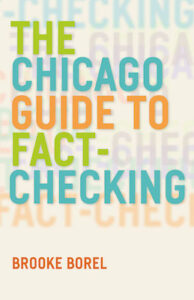When I was at university, I had the privilege of studying under the direction of one of the century’s great scholars of religious history, Dr. Richard Rohrbaugh. Professor Rohrbaugh specialized is the analysis of the early Christian period through the paradigm of socio-cultural anthropology. For all the things I learned from him I shall never be able to sufficiently thank or repay him, but of these myriad things, one of the first – and the one he turned to again and again – was the art of what he called “crap detection.”
For those unfamiliar with this particular research technique, it is exactly what it seems to be: the determination of what is reliable and what is crap when analyzing any previous research or commentary on a subject. However as Professor Rohrbaugh taught me, being able to distinguish reliable information from that which is less so is not only crucial to having one’s facts straight, it is essential in the production of accurate analyses of ancient manuscripts, which itself is of the utmost importance for crafting explanations that set the material contained in those manuscripts in its proper context. Facts are important, but without context, they can be just as misleading as the most egregious lies.
Thus when I took up my reading of Brooke Borel’s recently published The Chicago Guide to Fact-Checking, I was delighted to discover her assertion of the importance of context right in the first chapter: [non-fiction] “tells the reader ‘not only did this happen, but here is the context in which you should consider what happened.’” This, to be sure, is not likely what most think of when they hear the phrase “fact-checking.”
As Borel so clearly explains, fact-checking is far more than simply the examination of discrete points of information to determine the individual veracity of each one, it is the “zooming in to examine each individual fact or statement and then zooming out to see whether the story’s premise is sound.” It is the validation of both the micro as well as the macro in order to do all possible in ensuring that the reader is presented with the most accurate information on the subject and as a result given the best opportunity to understand what has been presented.
Given this, it should not be surprising that fact-checking as Borel presents it is anything but a rote process. Yes, there are a number of individual “hard” skills and processes involved; however there are also at least as many “soft” elements to it. It’s part science, part art, if you will. Which is likely why the Guide is not a step-by-step process or series of checklists but predominantly a narrative explanation of the mechanics of fact-checking interspersed with explanations of specific skills as appropriate. It’s a book through which one should read completely and only after having done so add it to the reference shelf for regular consultation.
For writers, both professional and amateur, Borel’s Guide should be considered essential. Even if what you are producing will be submitted to a professional fact-checker prior to publication, an understanding of the process will help to make your work more accurate and as a result more effective. For science communicators, these things are particularly important, now more than ever; for while it is always important to present factual information to your readers, with so many today having been convinced by less-than-scrupulous persons that such topics as global climate change, the efficacy of vaccines, or the theory of evolution are somehow malicious scams foisted upon the public for some nefarious purpose, anything incorrect slipping into a published work may very likely one day be cherry-picked, shifted out of context, and put forward as contradicting evidence against what you may have been trying to explain.
And lest it may be thought by some “I’m not a writer; such a book doesn’t really pertain to me,” if you gain nothing more from reading it than an improved ability to rationally and systematically assess the veracity of what you read or hear reported via whatever medium though which you gather your news of the world, your time spent reading it will be most certainly well spent indeed.
I would also offer the further observation that in this present age when social media platforms are so ubiquitous and influential, we are all writers for one another to a greater or lesser degree. Therefore we owe it to our family and friends – for whom much of this casual writing is done – to be able to produce posts, “tweets,” or other such writings in as accurate and properly contextualized a manner as possible. And given the nature of the electronic beast, what you write for merely (you think) the entertainment of your brother Fred, after only a few simple “likes” and “shares” may quickly appear on the screens of far more people than you ever intended; people who may not yet have availed themselves of the lessons in fact-checking so effectively taught in Borel’s Guide.
 Title: The Chicago Guide to Fact-Checking
Title: The Chicago Guide to Fact-Checking
Author: Brooke Borel
Publisher: University of Chicago Press
Format: Paperback or Cloth
Pages: 192 pp. (both paper & cloth)
ISBN: 9780226290935 (paper); 9780226290768 (cloth)
Published September 2016 (paper); October 2016 (cloth)
In accordance with Federal Trade Commission 16 CFR Part 255, it is disclosed that the copy of the book read in order to produce this review was provided gratis to the reviewer by the publisher.
